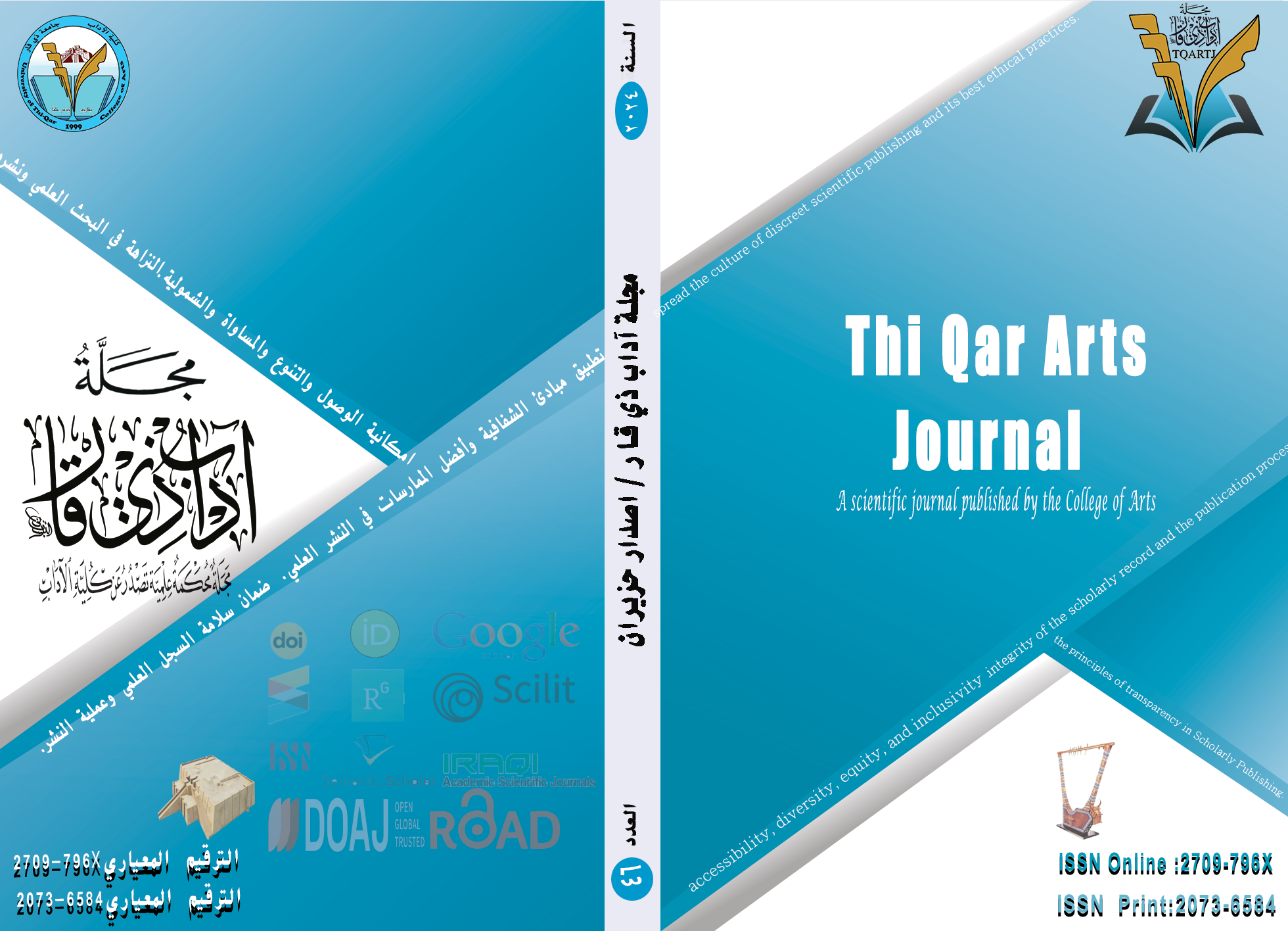the Exploring the Literary Representation of Trauma-Generated Dissociation in the personality of the protagonist of Hassan Blasim's The Nightmares of Carlos Fuente
DOI:
https://doi.org/10.32792/tqartj.v4i46.619Keywords:
The Nightmares of Carlos Fuentes , Trauma, dissociation, , traumatic neurosis.Abstract
The current research deals with the conceptualization of trauma-generated dissociation in the personality of the protagonist of Hassan Blasim's The Nightmares of Carlos Fuentes. The research adheres to the theory of trauma and dissociation of Sigmund Freud, Pierre Janet, and Cathy Caruth. It employs some of their psychological notions including identity fragmentation, pathogenetic reminiscences, traumatic neurosis, vehement emotions, speechless terror, latency period, and incubation to the personality of the protagonist of the story. The research concludes that traumatic events of war and violence in Iraq lead Salim (Carlos Fuentes), the protagonist of the story, to experience dissociative behavior that results in vehement emotions, identity fragmentation, and traumatic neurosis, leading to his tragic death.
Downloads
References
-References
Blasim, H. (2014). The Corpse Exhibition And Other Stories Of Iraq. New York: Penguin Books.
Breuer, J., & Freud, S. (1955). Studies on Hysteria (J. Strachey, Trans.). New York: Basic Books.
Caruth, C. (1996). Unclaimed Experience: Trauma, Narrative, And History. Baltimore: Johns Hopkins University Press.
Caurth, C. (1995). T RAUM: Explorations in Memory. London: The Johns Hopkins University Press.
Cohen, B. M. (1996). Art and The Dissociative Paracosm: Uncommon realities. In L. K. Michelson & W. J. Ray (Eds.), Handbook of dissociation: Theoretical, empirical and clinical perspectives (pp. 525-544). New York: Plenum.
Fassin, D., & Rechtman, R. (2009). The empire of Trauma: An Inquiry into the Condition of Victimhood (R. Gomme, Trans.). Princeton University Press.
Freud, S. (1920) Beyond the pleasure principle. Authorized translation from the 2d German ed. by C.J.M. hubback. London: Hogarth Press.
Freud, S. (1963). The Defense Neuro-Psychoses. In J. Rickman & P. Rieff (Eds.), S. Freud, early psychoanalytic writings (pp. 67–81). New York: Collier (Original publication 1894).
Janet, P. (1894). La faculté de synthèse psychologique. Paris: Félix Alcan.
Janet, P. (1898). Le traitement psychologique de l’hyste´ rie. In A. Robin (Ed.), Traite´ de the´rapeutique applique´e (pp. 140–216). Paris: Rueff & Cie.
Janet, Pierre. (1919), Les Medications psychologiques (3 vols.). Paris: Flex Alcan.
Kluft, R. P. (1992). Discussion: A specialist’s perspective on multiple personality disorder. Psychoanalytic Inquiry, 12, 139–171.
Leys, R. (2000). Trauma: A genealogy. Chicago: University of Chicago Press.
Putnam, F.W. (1985). Dissociation As A Response To Extreme Trauma. In R.P. Kluft (Ed.), Childhood antecedents of multiple personality, (pp. 65- 97), Washington, DC: American Psychiatric Press.
Van der Kolk, B. A., & van der Hart, O. (1996). The intrusive past: The flexibility of memory and the engraving of trauma. In C. Caruth (Ed.), Trauma: Explorations in memory (pp. 158–182). Baltimore: Johns Hopkins University Press.
Downloads
Published
License
Copyright (c) 2024 Lec.Dr. Maher Abdulhameed Abdulemam

This work is licensed under a Creative Commons Attribution 4.0 International License.
The journal applies the license of CC BY (a Creative Commons Attribution International license). This license allows authors to keep ownership of the copyright of their papers. But this license permits any user to download, print out, extract, reuse, archive, and distribute the article, so long as appropriate credit is given to the authors and the source of the work. The license ensures that the article will be available as widely as possible and that the article can be included in any scientific archive.



















